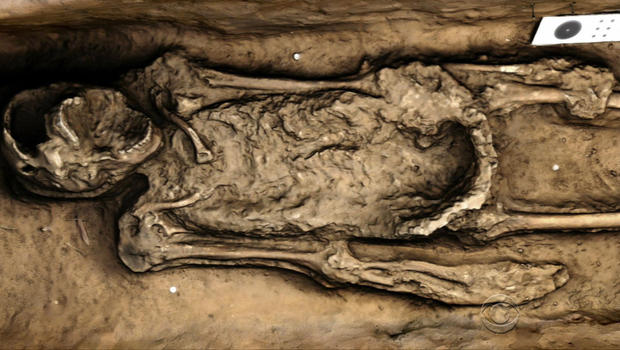-
Tips for becoming a good boxer - November 6, 2020
-
7 expert tips for making your hens night a memorable one - November 6, 2020
-
5 reasons to host your Christmas party on a cruise boat - November 6, 2020
-
What to do when you’re charged with a crime - November 6, 2020
-
Should you get one or multiple dogs? Here’s all you need to know - November 3, 2020
-
A Guide: How to Build Your Very Own Magic Mirror - February 14, 2019
-
Our Top Inspirational Baseball Stars - November 24, 2018
-
Five Tech Tools That Will Help You Turn Your Blog into a Business - November 24, 2018
-
How to Indulge on Vacation without Expanding Your Waist - November 9, 2018
-
5 Strategies for Businesses to Appeal to Today’s Increasingly Mobile-Crazed Customers - November 9, 2018
New discovery identifies 4 founders of the Jamestown colony
Jamestown archaeologists working with the Smithsonian Institution have identified four sets of remains found inside the footprint of a 1608 church as prominent early leaders of the historic Virginia colony.
Advertisement
The skeletons, plus the mysterious silver box found, can give clues to what life was like back in the American colonies.
The identifications were made using advanced scientific detective work, 400 years after their deaths.
James Horn, president of the Jamestown Rediscovery Foundation, said: “This is an extraordinary discovery”. “Without any question, the four men are four of the first leaders of the whole English enterprise in America”. This was actually the first successful English colony in the New World. The site was reserved exclusively for the most important colony leaders.
Play video “Early US Settlers Became Cannibals”.
The excavation of 400-year-old graves from America’s first permanent English settlement has opened a rare window into the country’s early years.
He was buried near his relative Captain William West, who was killed in a skirmish with Powhatan indians. Like Sir Ferdinando, he was buried in an elaborate human-shaped coffin. Researchers found the remains of a silk sash over the chest of his skeleton, likely indicating his military rank.
The fourth man, Reverend Robert Hunt, was the first Anglican minister in America and arrived with the founding expedition in 1607.
His parents were Catholics, who were an oppressed minority in Protestant Jacobean England. He died at 39.
His grave faced west towards the people he served, which helped researchers identify him as a man of God. William Kelso, director of archaeology at Jamestown Rediscovery, is surprised.
But the Church of England had a strong role in the creation of an English America, with the Protestant church acting as a bulwark against Spain’s Catholic colonies to the south, Horn said. The museum is helping to identify those buried in the church.
The Jamestown Rediscovery archaeology team revealed its discovery at the Smithsonian’s National Museum of Natural History. The results were compared with historical records to narrow the potential candidates for who they might be.
Researchers also conducted chemical analyses to examine diet, the presence of heavy metals and the men’s origins. All four men were leaders of the community which meant that they would eat on pewter plates. “If you are at the lower end of the socioeconomic status, you have less exposure to that … and it is something that is age-cumulative”. It was rigged by starvation and disease, a period of early settlement history referred to as the “Starving Time”. In this case, it was success times four.
The team of researchers, led by William M. Kelso, has unearthed a slow but steady stream of discoveries about the settlement since they began digging there in 1994, centuries after Fort James was thought to have washed into the James River. “I think it certainly puts a new emphasis on parts of that story that have never been known before”. Fortifications built during the American Civil War nearly destroyed the 1608 church. “If they’d dug another four feet they would have been gone”, says Kelso.
Going forward, the Smithsonian plans to conduct further research on the remains, including DNA analysis.
But with one mystery solved, another remains.
Advertisement
But it’s his little silver box that has the archaeologists who led the excavation puzzled. It also contained a lead vial typically used to hold holy water, oil, or blood.





























